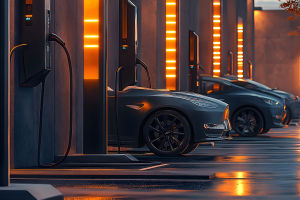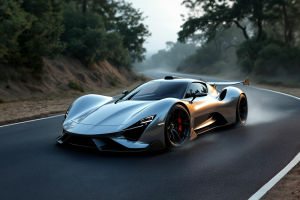We've all heard it: "Buy an electric car—it's better for the planet!" But is it really that simple? Around the world, more of us are considering switching from gas-powered cars to electric vehicles (EVs), hoping to lower our carbon footprint.
Yet many myths still surround this topic.
Today, we're going to take a closer look. Is an EV automatically the greener choice? And what do many global consumers often misunderstand? Let's explore this complex picture together.
Myth 1: EVs Have Zero Environmental Impact
It's true that EVs don't produce tailpipe emissions, which helps reduce local air pollution. But it's not the whole story.
The electricity that powers EVs has to come from somewhere. In regions where electricity mainly comes from coal or gas, charging an EV can still cause significant carbon emissions. A report from the International Energy Agency (IEA) highlights that the greener the grid, the greener the EV. For example, an EV in Norway (where 98% of power comes from hydroelectricity) is much cleaner than one in Poland, which relies heavily on coal.
We need to consider the entire energy chain—not just the car itself.
Myth 2: Battery Production Negates All Environmental Gains
Another common belief is that making EV batteries is so harmful that it cancels out any benefits. Yes, battery production is energy-intensive. Mining materials like lithium, cobalt, and nickel also raises environmental and ethical concerns.
However, experts say that while battery production does have a carbon cost upfront, EVs typically "break even" after driving 15,000 to 25,000 kilometers—meaning they start delivering a net carbon benefit after that point. According to a 2024 study from the MIT Energy Initiative, an average EV will emit 50–70% less carbon dioxide over its lifetime compared to a typical gasoline car, depending on local grid cleanliness.
It's also worth noting that battery recycling technologies are improving, which may further reduce future impacts.
Myth 3: EVs Are Only for Wealthy Urban Drivers
Many consumers still think EVs are luxury toys for city dwellers with easy access to charging stations. While this may have been somewhat true five years ago, the market is changing fast.
Affordable models are now available from many prominent brands, making EVs accessible to more households. Additionally, charging infrastructure is expanding in rural areas too. In countries like Germany, government incentives are helping build charging networks beyond major cities.
Of course, challenges remain, especially in remote regions. But the idea that EVs are only practical for the rich in large cities no longer holds.
Myth 4: EVs Can't Handle Long Trips
Range anxiety—fear of running out of battery—is still a major concern for many would-be EV buyers. However, battery technology has improved dramatically.
Today's mid-market EVs typically offer ranges of 400–600 kilometers per charge. Fast-charging networks are also growing worldwide. In Europe, one of the prominent charging network allows many EVs to regain 80% charge in under 30 minutes. In the U.S., a well known brand's Supercharger network now covers most interstate routes.
While long trips require more planning, they're increasingly feasible for EV drivers around the globe.
Myth 5: Once I Buy an EV, I'm Done Helping the Planet
This may be the most dangerous myth of all. Owning an EV is a great start, but it's not a free pass.
How we drive still matters. Efficient driving, proper maintenance, and mindful charging habits can all improve an EV's overall footprint. Experts such as Dr. David MacKay, a renowned sustainable energy researcher, have emphasized the importance of reducing unnecessary travel: 'The greenest energy is the energy you don't use.' We should still prioritize walking, biking, and public transport when possible.
So, What's the Bottom Line?
Are EVs greener than gasoline cars? Generally—yes. But the benefits depend heavily on where we live, how we drive, and how electricity is produced. It's not a simple "good" vs. "bad" equation.
Governments and manufacturers still need to tackle challenges like battery recycling, ethical sourcing of materials, and grid decarbonization. And we, as consumers, must stay informed and aware of the bigger picture.
We'd Love to Hear Your Thoughts
Are you considering buying an EV? Or do you already own one? What concerns or experiences do you have about its environmental impact?
Let's keep this conversation going—because the more we learn, the better choices we can make for both ourselves and the planet. Sometimes, the "greener" choice comes with nuance—and it's up to us to understand it fully. 🌍🚗


